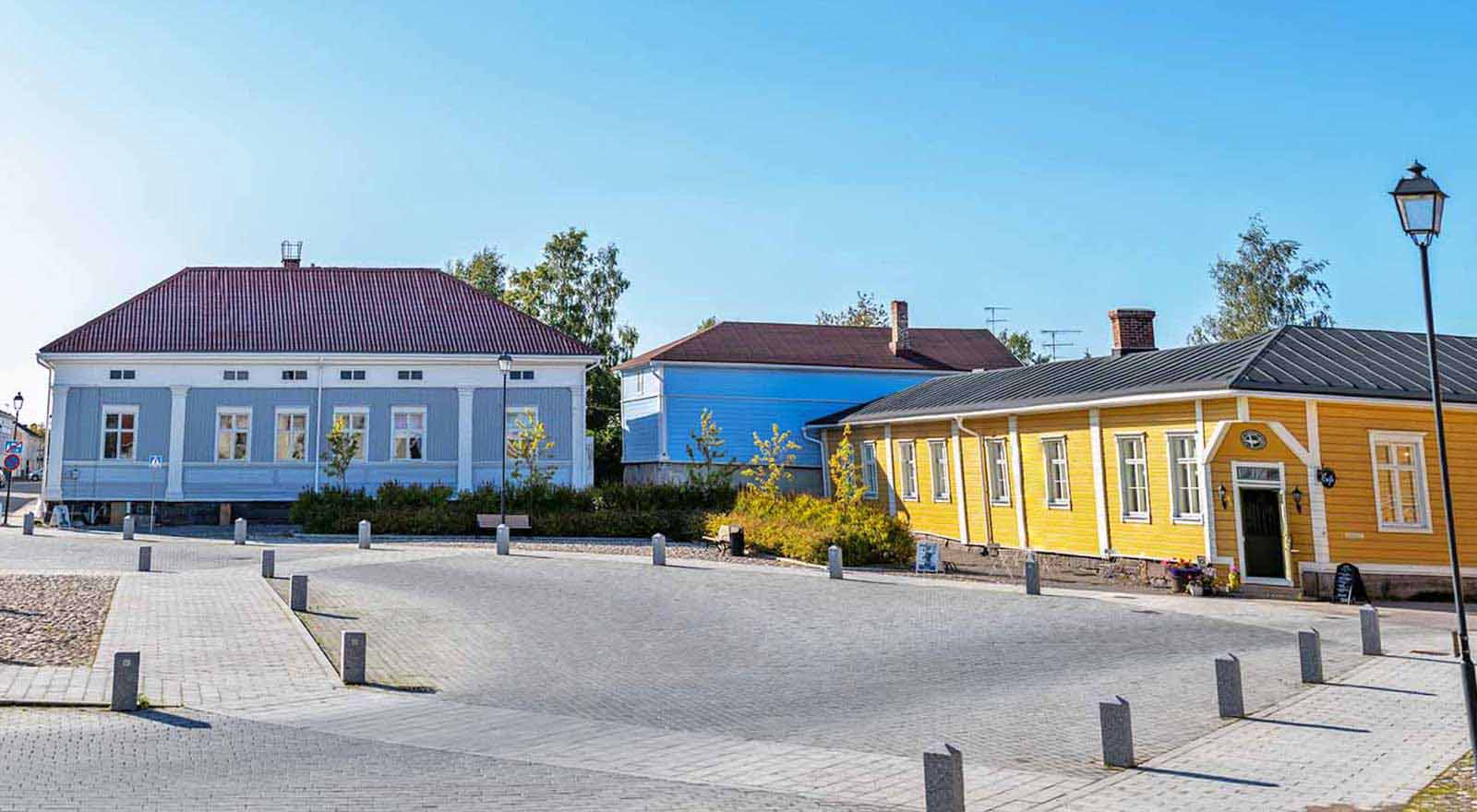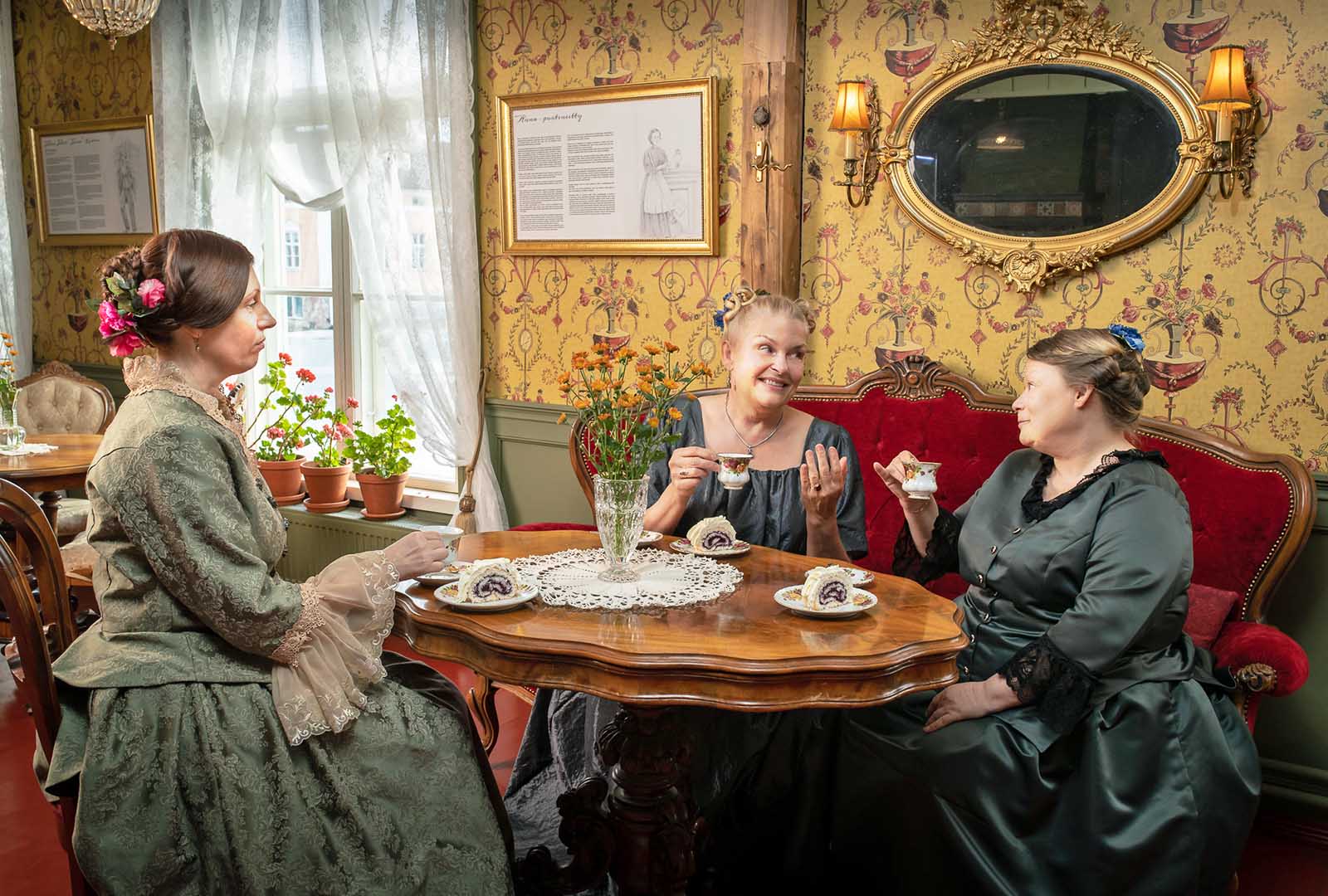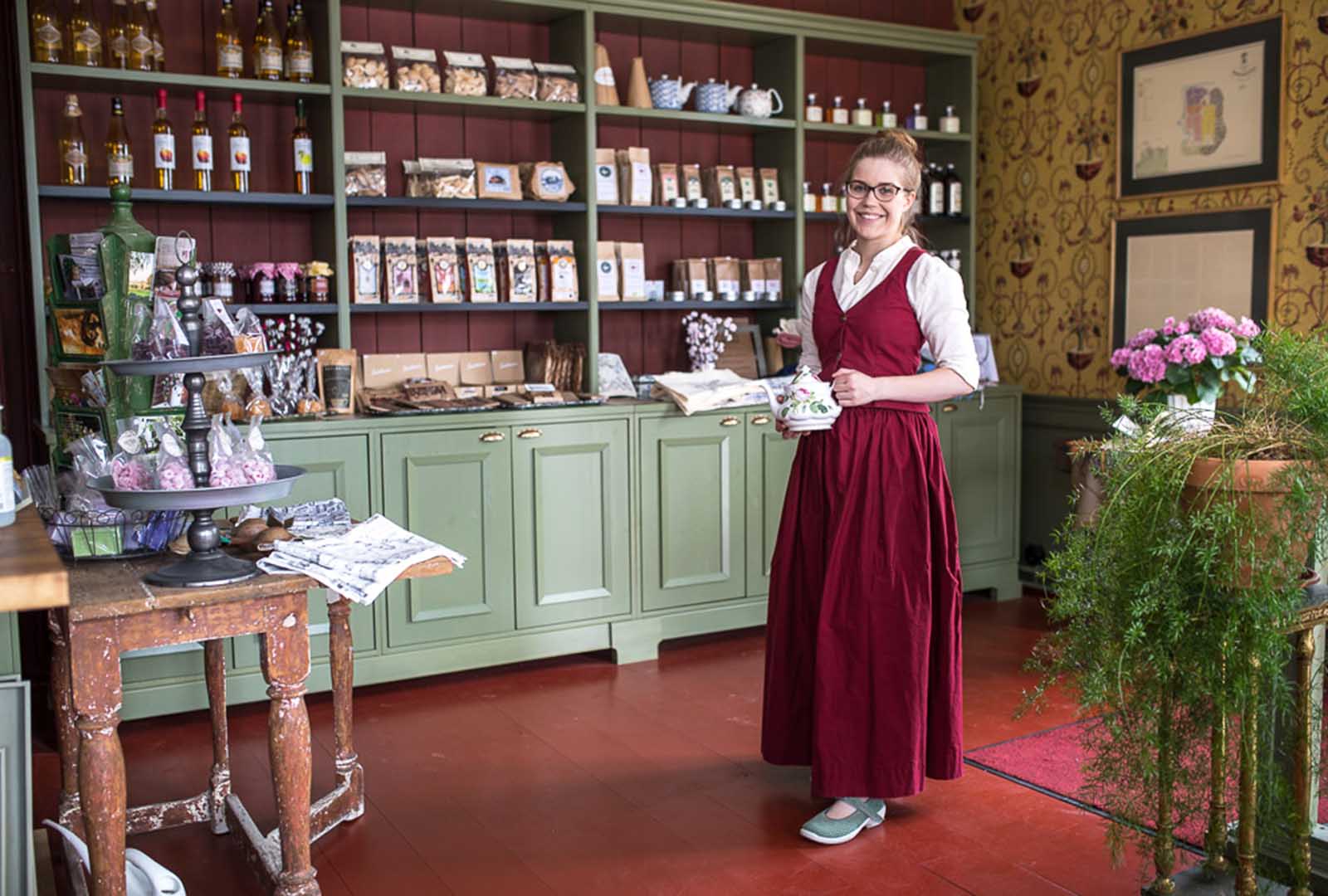About Us

About Us- Present day at Trading House
Today Langi Trading House is a lively and vibrant place, combining a historical atmosphere with modern service. We offer our customers a unique experience that takes you back to the era of sailing ships. You can organize meetings, parties and other business events in our historic premises, or enjoy delicious meals and pastries in our café, which is also part of this culturally and historically valuable environment. We are also dedicated to offering our customers experiential accommodation options in our boutique hotel, where each room tells its own story and takes you on a journey back in time.
Langi Trading House has been renovated with reverence and respect for the original buildings that are part of Raahe's cultural history. Since 2016, we have been reviving and preserving the buildings of Langi Manor, respecting the original architectural style and era. The buildings, which have been at the heart of Raahe's maritime and trading life for over 200 years, have been carefully and meticulously restored to their original state. The architecture and historical details of the manor have been preserved and brought to light so that future generations can enjoy Raahe's rich maritime history.
Langi's Lower Manor, where trade took place between 1811 and 1934, now functions as a living trading house, where you can enter the atmosphere of its era and enjoy the experiences offered by the café, shop and historical interiors. Langi Trading House combines the valuable culture of the past with modern customer service. The premises also offer our customers the opportunity to learn about the golden years of the sailing ship era and the stories of the people who influenced the house.
We are proud to offer our customers spaces where you can experience historical moments and sense the cultural history of Raahe while enjoying modern-day comforts. Whether it is a business trip, a celebration or a relaxing stay, Langi Trading House offers a unique experience that combines history and the present.




Langi Trading Hosue is a proud family business owned by Piia Vähäsalo and Pasi Siipola. Piia has been responsible for designing the interior design and launching the operation during the renovation project, bringing the long and interesting history of the trading hosue to life. Pasi Siipola, in turn, has been responsible for renovating the premises in collaboration with heritage restorers and other construction professionals, ensuring that everything remains original while respecting and preserving the cultural and historical value of the buildings.
The daily life of Langi Trading House is currently managed by Piia's daughter, Oona Similä, who carries forward the family traditions and business according to today's needs. Saara Kestilä is responsible for the kitchen, ensuring that customers are always offered tasty food made from Finnish and local ingredients. Jaana Anttila is responsible for the café and hotel, ensuring that her customers are comfortable and have a smooth service.
Langi Trading House employs 11 professionals year-round and about 15 seasonal workers in the summer, all of whom are part of this vibrant and developing company. This family-run business continues to cherish the traditions of the city of Raahe, while creating new experiences for its customers and preserving Langi's importance as part of Raahe's maritime city history.

History
After a fire in the city of Raahe on October 6, 1810, merchant Johan Lang bought two plots of land from the northwest corner of the new market. Lang's house had completed been destroyed in the city fire, except for the cellars. Johan Lang first built an outbuilding on the new plot, the so-called lower manor, in 1811 and the following year a handsome main building. The buildings of Lang’s Trade House dominate the northwest corner of the market, showing the owner’s wealth and position in the city.
Johan Lang's trading house had an effect on the Raahe life for a long time. Merchants and women at the trading house, especially those in the “Franzen era,” left a strong memory of life in Raahe and the wider region. In the Lower Manor, there were two shops, the apartments of the captain and the shop maiden, a brewery, accommodation for the peasants and their horses who came to do business from the provinces.
Pekka Square is the most important part of Gustaf Odenwall's town plan (1811) made after the fire in Raahe. It was meant to become a centre of commerce and administration. The square is surrounded by seven residential plots and many of important families of Raahe built right by the square. The new builders were the town’s most notable members of the bourgeois, merchants, jurors, merchants, and shipowners.
The buildings surrounding the square all represent the 19th-century wooden classicism. This enclosed market complex, based on the ideals of the Italian Renaissance, has remained exceptionally cohesive. The Pekka Square is internationally valuable and of squares of the Finnish wood towns, it is the best preserved.



The Trade House of Lang was a typical trading house of a former coastal city, engaged in land and foreign trade, ship-ownership and, over time, it formed a group of companies whose products were needed in both ship ownership and trade. In calculations of the wealth tax of 1800, Johan Lang's property was among the four largest merchant assets in Finland. Lang's business was the largest trading house in Northern Finland. The property of the trade house included sailing ships, sawmills and ironworks. In the 1820s and 1830s, Lang's trading house was the largest iron manufacturer in Northern Finland.
The Trade House of Lang was twice inherited by the son-in-law. First, at the death of merchant and shipowner Johan Lang to Zacharias Franzén, and after the death of Zacharias Franzén, a merchant, to Fredrik Sovelius, the younger, became the head of the business. When Johanna Lang's daughter Johanna Gustava and Charlotta married the sons of the Oulu merchant family, Zacharias and Johan Franzen, the two most important merchant families in Northern at the time were merged. The trading house has been influenced by all of Raahe's great families – the Langs, the Franzens, and the Sovelius’.
At the beginning of the 1930s, of the old trading houses only the Trade House of J. Lang & co. had remained. The Trade House of Lang had also managed to survive the difficulties caused by the Crimean War and it had also played a significant role as a financier as Raahe's ship ownership rose to new heights after the Crimean War. The merchant fleet of this small town was for a long time the largest in Finland. Johan Lang company’s business ended in bankruptcy in 1934, but its enormous significance for the development of Raahe and the surrounding area was not diminished by that.
Sources:
Eero Sovelius-Sovio: Ihmisiä laivojen kaupungista (People from the Town of Ships)
Eero Sovelius-Sovio: Sovio-Sovelius-suku (The Sovio-Sovelius Family)
Samuli Paulaharju: Wanha Raahe (The Old Raahe)
Raahen kaupungin 300-vuotismuistojulkaisu (300-year Memorial Publication)
Jari Ojala, Patriarkan kuolema, teoksessa Arjen Valta, toim. Piia Einonen et. (The Death of the Patriarch by Jari Ojala in The Power of the Everyday edited by Piia Einonen et al.)
By Ms. Eija Turunen, the Head of the Museum

Today Langi Trading House offers its guests memorable moments in a historic setting in the heart of Raahe. The renovated premises of the family business are of cultural and historical value and have been carefully restored, and their interior design, food offerings and warm service take visitors on a journey back in time to the atmosphere of the sailing ship era. Langi combines history, a modern atmosphere and a love of tradition – all of this lives and breathes in a unique courtyard, where every visit tells a new story.




